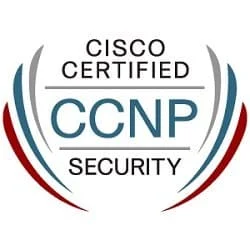CNP Security SFWIPA– Advanced Techniques for Cisco Firewall Threat Defense and Intrusion Prevention

The SFWIPA Advanced Techniques for Cisco Firewall Threat Defense and Intrusion Prevention course is part of the Cisco CCNP Security track . This course provides participants with advanced knowledge of implementing and configuring the Cisco Secure Firewall Threat Defense and its capabilities as a data center network firewall or as an Internet Edge firewall with Virtual Private Network (VPN) support. Participants will learn how to configure identity-based policies, Secure Sockets Layer (SSL) decryption, remote-access VPN, and site-to-site VPN, and then move on to advanced Intrusion Prevention System (IPS) configuration and event management, integrations with other systems, and advanced troubleshooting. Participants will also learn how to automate Cisco Secure Firewall Threat Defense system configuration and operations using programmability and Application Programming Interfaces (APIs), and how to migrate configuration from Cisco Secure Firewall Adaptive Security Appliances (ASA). This course contributes to the preparation for the CCNP Security Certification exam (Exam 300-710) .
Course Objectives
Below is a summary of the main objectives of the SFWIPA Advanced Techniques for Cisco Firewall Threat Defense and Intrusion Prevention Course :
- Configure advanced settings and policies on Cisco Secure Firewall Threat Defense.
- Implement and manage the advanced capabilities of the Cisco Secure Firewall Threat Defense System.
- Automate configuration and operations using programmability and APIs.
- Migrate configurations from Cisco Secure Firewall Adaptive Security Appliances (ASA).
- Troubleshoot advanced traffic flow issues on Cisco Secure Firewall Threat Defense.
- Integrate Cisco Firewall Threat Defense with advanced threat intelligence solutions.
- Troubleshoot complex network security issues using advanced diagnostic tools.
- Optimize firewall performance through best practices and fine-tuned policies.
Course Certification
This course helps you prepare to take the:
Exam 300-710 SNCF Securing Networks with Cisco Firepower;
Course Outline
- Firewall Functionality
- Cisco Secure Firewall Platforms
- Use Cases
- Deployment Options
- Management Options
- Basic Network Settings
- Packet Processing
- ACP and Prefilter Policies Overview
- Cisco Secure Firewall Smart Licensing
- Cisco Secure Firewall Threat Defense Architecture
- FXOS and Secure Firewall Chassis Manager
- Multi-Instance Deployment
- Cluster Deployment
- Cluster Configuration
- Configure Multi-Instance Firewall Using Chassis Manager
- QoS Implementation
- Service Policies Implementation
- FlexConfig Policies Implementation
- Traffic Bypass
- Deploy Advanced Connection Settings
- Configure Cisco Secure Firewall Management Center Certificate
- Configure a QoS Policy
- Service Policy
- Dynamic Routing Overview
- Virtual Routing
- Dynamic Routing Configuration
- Configure Dynamic Routing
- Creating VRF
- Configuring BGP
- Configuring EIGRP
- Network Address Translation Overview
- Advanced NAT Rules Implementation
- SSL Encryption Overview
- SSL Decryption Overview
- SSL Policy Configuration
- SSL Policy Best Practices
- Configure SSL Policy
- Configuring Outbound SSL Decryption
- Configuring Inbound SSL Decryption
- Configuring SSL Control
- Remote Access VPN Components
- Digital Certificate Enrollment
- Remote Access VPN Configuration
- Remote Access VPN High Availability
- Configure Remote Access VPN
- Remote Access VPN Prerequisites
- Remote Access VPN Configuration
- AnyConnect VPN User Certificate Authentication
- Using Dynamic Access Policies
- Configuring AnyConnect Profile
- Configuring Remote Access VPN for Contractors
- Identity-Based Policies
- Realm Configuration
- Identity Source Configuration
- Identity-Based Policy Configuration
- Configure Identity-Based Policy
- Configuring Firewall ID
- Configuring ISE Passive Identity
- Configuring Active Identity
- Site-to-Site VPN Components
- Policy-Based and Route-Based Site-to-Site VPNs
- Point-to-Point VPN Configuration with VTIs
- Hub-and-Spoke VPN Configuration with Crypto Maps
- Site-to-Site VPN High Availability
- Configure Site-to-Site VPN
- Configure the FTD-Branch Node for Site-to-Site VPN using Cisco Secure Firewall Device Manager
- Configure Site-to-Site VPN using Cisco Secure Firewall Management Center
- Verify Site-to-Site VPN Operation
- Snort and Network Analysis Policy
- Snort Rules and Actions
- Secure Firewall Recommendations
- Customizing IPS and NAP Policies
- Create an Intrusion Policy
- Generate Secure Firewall Rule Recommendations
- Apply the Cisco IPS Policy and Test
- Configure a Snort Pass Rule
- Configure a Custom Network Analysis Policy
- Alerting
- Correlation Policies
- External Event Logging
- Integration with Cisco Identity Services Engine
- Integration with Cisco Secure Network Analytics
- SecureX Integration
- Configure Cisco Secure Firewall Threat Defense Integrations
- Cisco ISE integration with Cisco Secure Firewall Management Center
- Configuring Cisco Secure Firewall Management Center Correlation Policy
- Configuring Rapid Threat Containment Solution
- Configuring Security Analytics and Logging (SAL)
- Traffic Flow Overview
- Troubleshooting Tools
- Troubleshooting Process
- Performance Troubleshooting
- Troubleshooting Cisco Secure Firewall Threat Defense
- Troubleshooting Use Case 1: I do not see any events for my traffic
- Troubleshooting Use Case 2: My VPN is not working
- Troubleshooting Use Case 3: My traffic is silently dropped
- Network Operations Automation
- Cisco Secure Firewall Management Center API Overview
- Cisco Secure Firewall Device Manager API Overview
- Cisco Secure Firewall Threat Defense Automation
- Examine Cisco Secure Firewall Management Center API Explorer
- Use Postman to Make an API Call
- Automate Cisco Secure Firewall Management Center with Python Script
- Migration Options
- Migration Tool
- Migration From Cisco Secure Firewall ASA
- Migrate Configuration from Cisco Secure Firewall ASA
- Verify Network Environment
- Migrate an Existing Secure ASA Configuration to Cisco Secure Firewall
- Deploy and Verify the Configuration to FTD-2
Laboratory Activities
- Deploy Advanced Connection Settings
- Configure Dynamic Routing
- Configure SSL Policy
- Configure Remote Access VPN
- Configure Site-to-Site VPN
- Customize IPS and NAP Policies
- Configure Cisco Secure Firewall Threat Defense Integrations
- Troubleshoot Cisco Secure Firewall Threat Defense
- Migrate Configuration from Cisco Secure Firewall ASA
Course Mode
Instructor-Led Remote Live Classroom Training;
Trainers
Trainers are Cisco Official Instructors and certified in other IT technologies, with years of hands-on experience in the industry and in Training.
Lab Topology
For all types of delivery, the Trainee can access real Cisco equipment and systems in our laboratories or directly at the Cisco data centers remotely 24 hours a day. Each participant has access to implement the various configurations thus having a practical and immediate feedback of the theoretical concepts.
Here are some Cisco Labs network topologies available:
Course Details
Course Prerequisites
- AParticipation in the CCNP Security SFWIPF Course is recommended .
Course Duration
Intensive duration 5 days
Course Frequency
Course Duration:5 days (9.00 to 17.00) - Ask for other types of attendance.
Course Date
-
- Cisco SFWIPA Course (Intensive Formula) – On request – 9:00 – 17:00
Steps to Enroll
Registration takes place by asking to be contacted from the following link, or by contacting the office at the international number +355 45 301 313 or by sending a request to the email info@hadartraining.com


